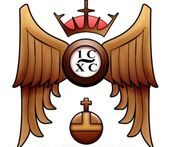The Chapel of the Holy Spirit, formerly known as the Minerva Chapel, is one of the oldest buildings in Palm Beach County. This eclectic style building was first used as a tea house for the Royal Poinciana Hotel in Palm Beach, which was built by Henry Flagler in 1894. The six-story, Georgian-style hotel was built as a winter retreat for the elite by Flagler an oil, real estate and railroad tycoon. When he began buying tracts of land at any price, Palm Beach was a desolate barrier island on Florida’s Atlantic coast. That began changing when Flagler extended his Florida East Coast Railway to West Palm Beach. The Royal Poinciana Hotel, built beside the Lake Worth Lagoon, was intended to accommodate his railroad’s passengers escaping cold northern winters. Ground was broken May 1, 1893, and the hotel opened on Feb. 11, 1894—welcoming 17 guests. In the 1920s, tourists began to consider Victorian hotels as relics, and attendance at the Royal Poinciana declined. In 1925, the Breakers burned and was rebuilt, reopening in 1926 with new luxuries which attracted guests away from the Royal Poinciana. The 1928 Okeechobee hurricane hit the old hotel hard, especially the north wing, which shifted off its foundation. It was repaired, but then the Stock Market Crash of 1929 and subsequent Great Depression dealt fatal blows. The sprawling structure closed in 1934. After the hotel was demolished in 1936, Willis Reinhart of Palm Beach built a place in Hypoluxo and brought the little tea house 10 miles down the Intracoastal Waterway by barge, where it served as a guest house for the Willis Reinhardt estate. From 1946 to 1951, the building served as the exclusive Gold Key Club, which was part of the Lake Shore Club gambling casino. Only people who could afford substantial losses had a gold key. Although gambling was illegal in Florida, the club circumvented that technicality by operating as a private club. It operated openly for three years before a federal crackdown on gambling shut it down.
During the 1950s, the tea house became part of Autorama, the brainchild of the late Metropolitan Opera star James Melton, who wanted to exhibit his unusual collection of antique cars. The attraction, located at the former Lake Shore Club gambling casino, opened April 25, 1953. The exhibition, valued at more than $500,000, was a collection of antique cars, murals and Jumbo, one of the largest fire engines in the nation at that time. Prominent Boynton Beach artist Bernard Preston Thomas was commissioned for the art work. He used the tea house as a studio. In a three-year project, he painted a large cyclorama depicting the history of America in a room 200 feet in circumference and 11 feet high. When his work was completed, the tea house became the gift shop. The late Lowell Thomas, world-renowned radio broadcaster and global traveler, provided narration for the cyclorama. When Melton was in town, he entertained tourists with American ballads, westerns and folk songs. As interest in the Autorama faded, the cars were sold to Winthrop Rockefeller and were moved to Arkansas. The tea house was bought in 1967 by former Hypoluxo Mayor James Brown. He moved the building to his Carefree Cove Mobile Home Park, where it was used as a chapel he named Minerva Chapel in honor of his mother. He installed a carved wooden altar, stained glass windows and added an exterior stone railing, and named it Minerva Chapel, after his mother’s first name. Brown sold the trailer park in 1988 and donated the chapel to Holy Spirit Anglican Catholic Church in Palm Springs, an Old Tradition Anglican Church. Its 66-seat capacity serves an active congregation.
In August 2011, the chapel was moved to the Church of the Holy Guardian Angels, where it was renamed the Chapel of the Holy Spirit. Source Florida Historic Places
Video of the 2001 move to Holy Guardian Angels https://www.youtube.com/watch?v=5duDoHE9_mk
[SLGF id=1330]
